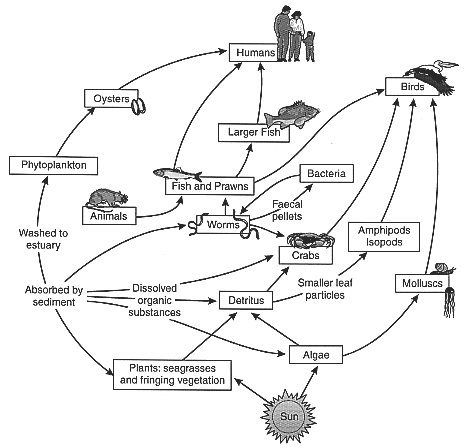
Figure 2-2: A typical estuarine food web
Food webs
| All plants and animals need energy to live and grow. They get this energy from their food. Energy is transferred from plants when they are eaten by small animals. It is then transferred from small animals when they are eaten by larger animals, and from those larger animals when they are eaten by even larger animals. This is called a food chain. However, most foods are eaten by many different kinds of animals. This means that an animal can belong to more than one food chain at the same time. When many food chains are interconnected this is called a food web. |
Plants form the basis of a food web. They use nutrients, carbon dioxide and the sun's energy to make food. This process is called photosynthesis. The living plants are eaten by animals such as crustaceans or snails. Decomposing remains of dead plants, called detritus, provide food for small organisms, such as bacteria and fungi. Crabs, worms, shrimps and small fish also feed on the detritus, and these in turn are eaten by larger fish and seabirds.
Aquatic food webs are based on primary producers (plants) and detritus. The primary producers in an estuarine environment include microscopic plants known as phytoplankton (diatoms, for example), larger plants including macroalgae such as Cladophora and Chaetomorpha, seagrasses (Halophila and Ruppia, for example) and the fringing vegetation around the margins of the estuary. Plant growth is influenced greatly by light, nutrients and temperature, which all change from season to season. Plants trap nutrients in an estuary and prevent the loss of phosphorous and nitrogen to the ocean. Detritus is formed when plants or animals die and decay through the action of bacteria and fungi. Detritus is formed from matter which enters the estuary from three major sources:
| For more information about consumers see section 6 - Waterway life |
Secondary consumers are animals which feed on primary consumers. In an estuary this group is represented by some species of predatory zooplankton, gastropod molluscs and polychaete worms. Many species of fish are secondary consumers, including the commercially important cobbler and yellow-eye mullet, the recreationally important whiting and black bream, and small fish such as gobies and hardyheads. Polychaetes, amphipods (benthic crustaceans), bivalve molluscs and copepods (planktonic crustaceans) are some of the creatures eaten in varying amounts by the fish mentioned above.
The animals at the next level of the food web feed predominantly on the secondary consumers and are termed tertiary consumers. These include fish such as mulloway, tailor and flathead; and birds such as pelicans and cormorants. These species feed largely on small fish, shrimps and prawns. Humans are major consumers of the larger fish, prawns and crabs which are either commercially or recreationally important.

Figure 2-2: A typical estuarine food web
A change in environmental conditions may result in an increase or decrease in numbers of a particular plant or animal. In extreme cases, it may even result in the extinction of an organism from the area and disrupt that particular food web. This can upset the delicate balance that exists between various organisms in a food chain or food web.
Simple food chains are generally less stable than complex food webs. Consumers that primarily depend on one food item are more vulnerable than consumers that have a variety of food sources. Because many animals in estuaries depend on the aquatic plants, changes to the base of the food web (aquatic plants) will have a more serious effect than changes to the top of the food web (such as fish and birds).
All stages of the food web are important to the quality of the estuarine environment and its biota. Nutrient enrichment of an estuarine system can result in the growth of macroalgae in an estuary. Because some commercially popular fish enjoy this food, macroalgal growth can lead to an increase in their numbers. In contrast, nutrient enrichment can result in blooms of miroscopic algae such as blue-green algae. These blooms disrupt the diatom-zooplankton-fish food pathway during the spring-summer months and fish move away from the affected area. Sometimes, pesticides, heavy metals and other toxins which have been stored in plants which have been eaten by creatures higher up a food chain, such as fish, are then found in dangerous levels in those creatures.